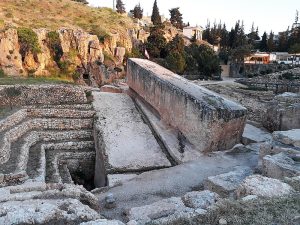
The deeply ancient network of megalithic sites that includes both Göbekli Tepe and Karahan Tepe that stretches across the southern portion of modern-day Türkiye now counts yet another of the suspected twelve sites amongst its number, Boncuklu Tarla, a site with buildings that may prove to be even older than the two previously-excavated complexes that already date back to the end of the last ice age.
First uncovered during archaeological surveys being conducted in 2008 ahead of the building of the Ilisu Dam in Türkiye’s Southeastern Anatolia region, the archaeological site known as Boncuklu Tarla (‘Beaded Field’ in Turkish) was home to 25 different civilizations—the Sumerians, Akkadians, Babylonians, Hittities, Romans and Ottomans, just to name-drop a few of the more well-known examples. Formal excavations began in 2012, eventually uncovering an ancient temple that dates to the same era as the 11,000-year-old Göbekli Tepe, and appears to be part of the megalithic complex that includes Göbekli Tepe and its even older sister site, Karahan Tepe.
Human occupation of Boncuklu Tarla covered numerous periods, with the site being abandoned and re-settled at least six times over the course of its history, stretching back to at least 12,000 years ago, making it even older than the confirmed age of Göbekli Tepe by at least a millennium. Aside from the temple, which is also being referred to as a communal building, archaeologists have uncovered residential houses of varying sizes and storage spaces that would have served the community.
“An important part of the [communal] building, which was built three times one-on-top-of-the-other and dates back to 10,000 B.C., has been unearthed,” according to excavation leader Ergül Kodaş, Associate Professor at Mardin Artuklu University, Department of Archeology.
“An entire building was unearthed,” said Associate Professor Ergül Kodaş. “These are large-sized structures that are not residential and have been used by many individuals or groups.
“Several special structures, which we can call temples, were unearthed in the settlement, in addition to many houses and dwellings.”
Although they are apparently smaller than the ones found at the younger site, Boncuklu Tarla’s temple sports T-shaped pillars similar to the iconic ones found at Göbekli Tepe; however, the age of the earliest layer found at the site dates back to 13,000 years ago, with indications that the site was occupied continuously for roughly 4,000 years, from 11,000 to 7,000 BCE.
Numerous individual artifacts have been uncovered at the site, including over 100,000 beads and 2,000 copper artifacts, along with carved figures of scorpions and snakes. An 11,800-year-old sewer system was also uncovered at Boncuklu Tarla, the oldest-known sanitation system of this kind.
“We were only able to unearth a certain portion of the sewer system, and confirmed it was in a public use area,” Kodaş stated.
Unlike Göbekli Tepe’s extensive 28-year excavation, the dig at Boncuklu Tarla has only been underway for 11 years, meaning that archeologists have only scratched the surface of what is expected to be unearthed there; like its more famous sister site, the archeologists uncovering Boncuklu Tarla estimate that only five percent of the site has been excavated, with many more discoveries yet to come.
Subscribers, to watch the subscriber version of the video, first log in then click on Dreamland Subscriber-Only Video Podcast link.
We know so little about these places. I watched the series The Gift, fiction, on Netflix, but filmed a lot at Göbekli Tepe, fascinating site!